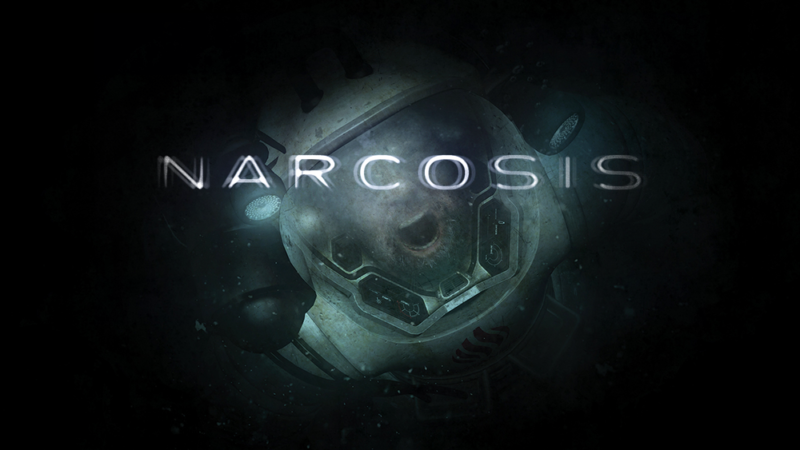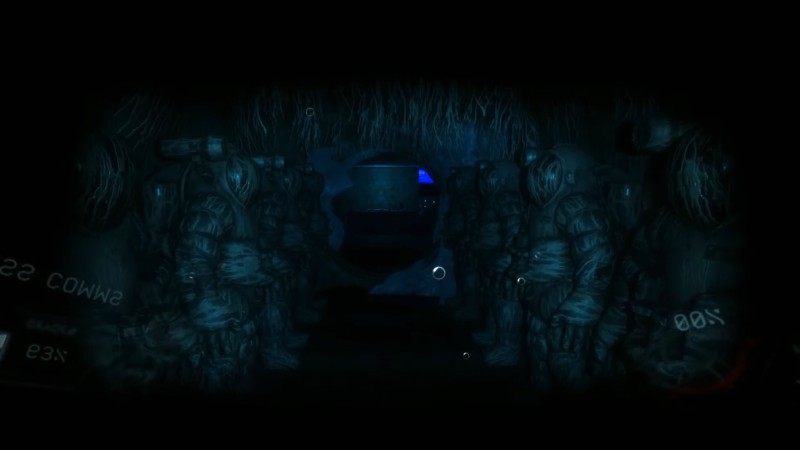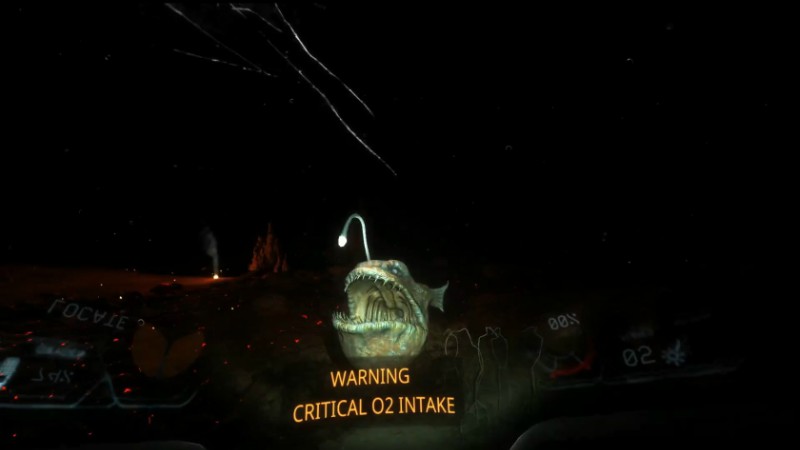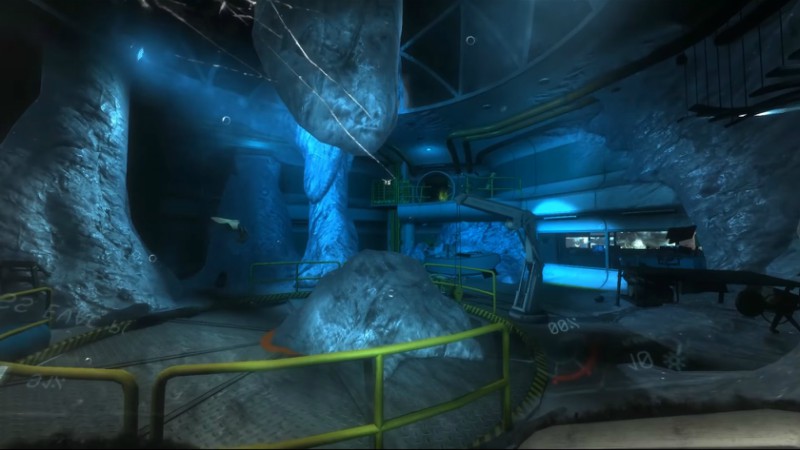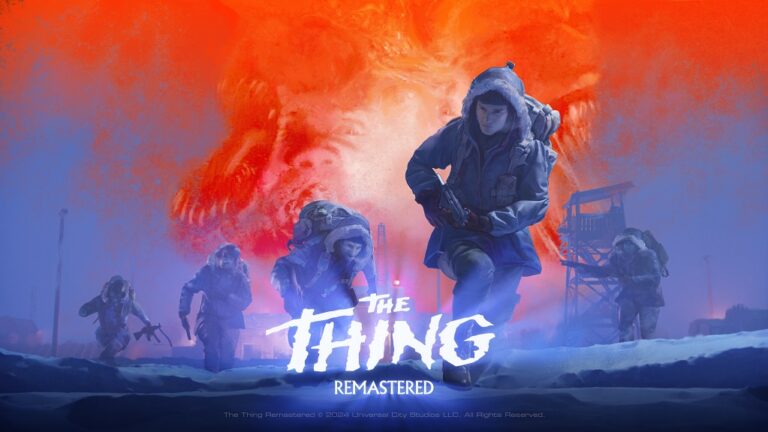I’ve been mulling what to say about Narcosis all day. It defies easy summaries, really, because it is no one thing. I suppose we can start with the very basics – the points any good marketer would stick to. Narcosis is thus a horror exploration game with a heavy focus on narrative. There is some very light platforming here and there using the limited thrust capabilities of your suit, and a negligible amount of combat meant to underscore your limitations. There is not much more to juggle with this game. You are set deep on the ocean floor without preamble, an unknown character in an unknown world. You remain an unknown person until the end of the game, and that works well. The focus was never really on you, anyway.
At its heart, Narcosis is a lot of being alone with your thoughts. You are stuck navigating the high pressure of the deep sea in a half-ton metal suit, which necessarily limits the pace of your motion. Global warming moves faster than walking in the suit that keeps you safe, which makes every moment tense as you race to the next oxygen tank or refill station. Without a careful eye on oxygen levels, you suffocate. There is no stopping to consider your next action, nor is there time to make mistakes. There is only the relentless march forward – or death.
Death abounds in Narcosis, the underwater command centers turned to catacombs by an unexpected earthquake. The bodies of staff and marine life alike litter the ocean floor and office halls. Nature has spared no one in this disaster, and she seems in no mood to spare you. Throughout your journey to reach the surface, you must battle the raging cold, hostile aquatic life, volcanic craters, and a slow loss of sanity bred by isolation and hardship. At times, visions seem to guide you. Others bring fatal suffering. Very little distinguishes the two, and at no point can you trust your own senses.
Speaking of trusting your own senses, I played Narcosis in VR. It is always a little disappointing to jump into a game built for PC and ported to VR, but Narcosis seems to be just the opposite. Having jumped into both the VR and standard versions of the game, I feel like Narcosis was built with VR at the absolute forefront of the developers’ minds. The suffocating enclosure of your aquatic suit is perfectly translated to the headset, sharing a control panel and limited field of vision with its real counterpart. Adding to the realism is condensation that appears on the glass every few seconds in time to the sound of your character breathing. As you play, your own breath syncs up to the character, tripling the claustrophobic effect of the suit and enhancing the terror of the game with every step.
Don’t get me wrong, Narcosis is still good outside of VR. Developer Honor Code didn’t stop at breath on your faceplate. The movement of water and creatures around you, the behavior of gases trapped in the sea, the way blood streams through and stains the water around it- all are handled beautifully by the game’s engine and coding. Platformer fans will enjoy the ever-changing challenges of navigating broken bases and a cavernous ocean floor. Horror fans will enjoy the slow demise of sanity and the twists in the story’s end. Players who enjoy slice-of-life stories will like the way the narration is broken across the game, tied to critical points as you progress. What I am not sure of is who, exactly, will appreciate the entire game for what it is.
I am not sure what to name the sub-sub-category I want to talk about here. It can be defined thus: Slice-of-life exploration games with strong horror elements and adult themes, usually featuring puzzle solving and some light platforming. Narcosis goes here, beside its brethren from Firewatch and Lifeless Planet. All three games are slow, methodical, fairly linear, and rely on suggestion more than outright horror. It takes a taste for restrained horror to appreciate what they are doing. Stretching the outer limits of the group, Life is Strange might fit in here. They’re horrifying in a very real, tangible way that many modern players seem not to enjoy. The dark depths of these games are the monsters of our nature, not mere allusions to those faults the way zombies and plagues might be. Appreciating them takes something of a dry wit and willingness to see the hard, broken edges of the world we live in.
In the end, it is that realistic horror that makes me love these games. Most horror you can put down; there will not be zombies jumping out at you when you turn off your console. Games like Narcosis do not simply pack away when you power down, though. How would you respond in a disaster? What would you risk? How would you live with your choices? Is surviving worth the guilt or memories? Is dying the better option? The horror of Narcosis is not in the game. It is inside each of us, latent and untested. As we go about our routines unaware, there are monsters all around us and within us, ready to take us down at the first hint of an opportunity. You need only look at any personal tragedy to find them, lurking in the dark corners of every self doubt, missed connection, or unmade call. That is what Narcosis does well, and many of you are not going to like it. Too ‘boring’, too ‘dry’, but for those who are willing to see it through, just enough of a question to break down a wall inside your own head.
 (7 / 10)
(7 / 10)
Good
 (7 / 10)
(7 / 10)Rely on Horror Review Score Guide
Oculus and Steam PC codes provided by developer for the purpose of this review.
Specs: Intel Core i3-4130 @ 3.4 GHz, GeForce GTX 950 – 2G O, 16GB RAM, Oculus Rift VR Headset

